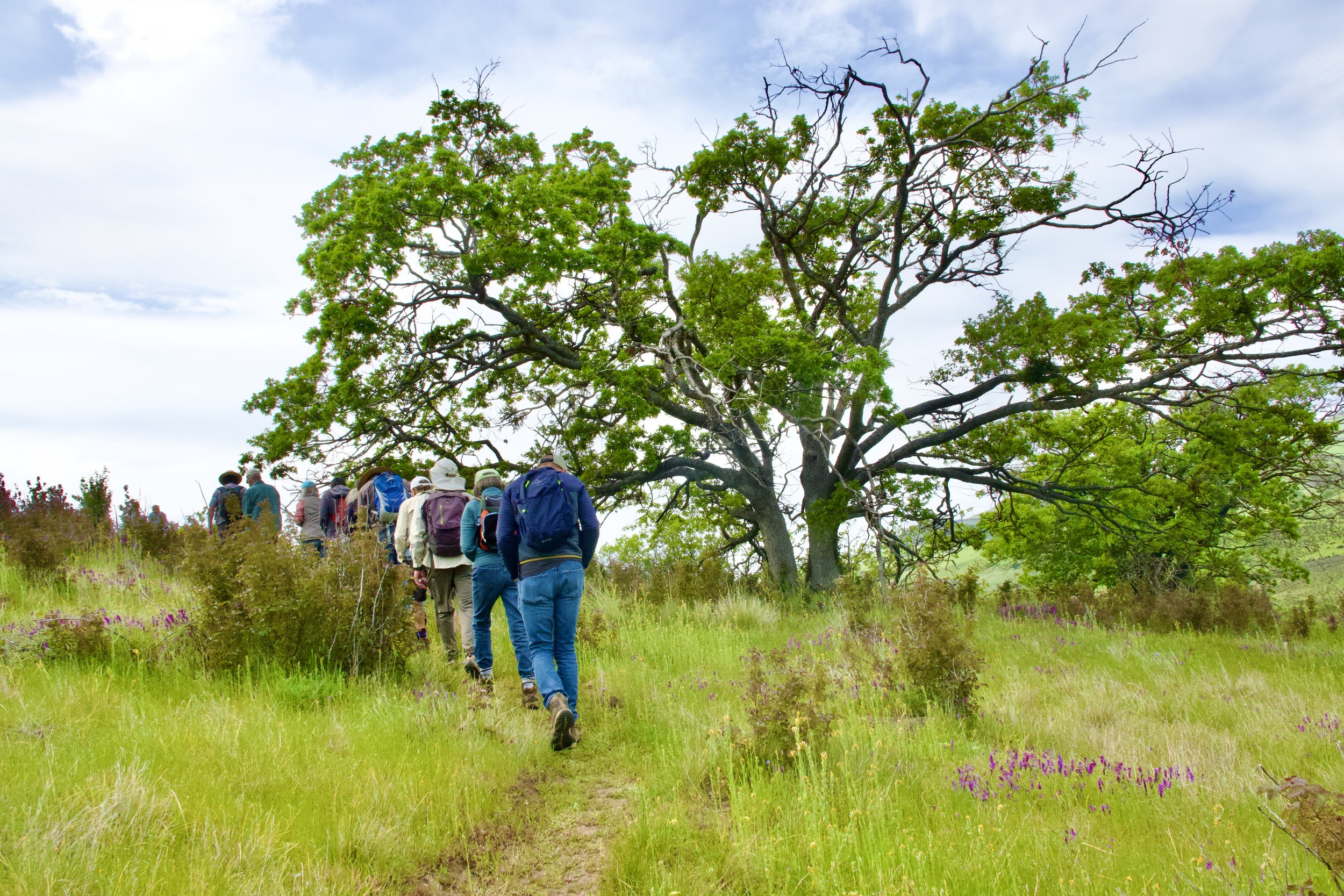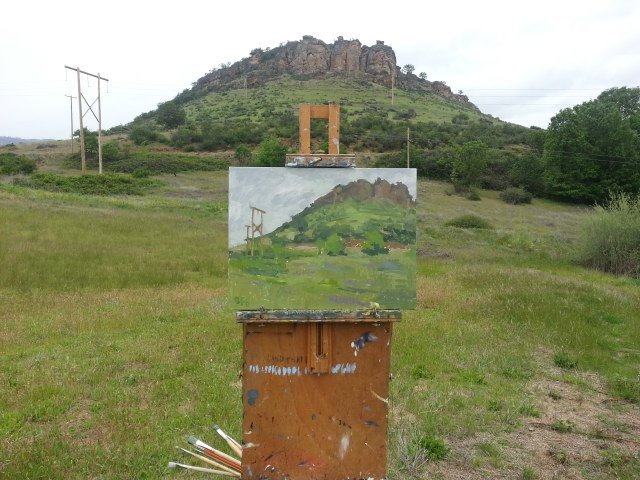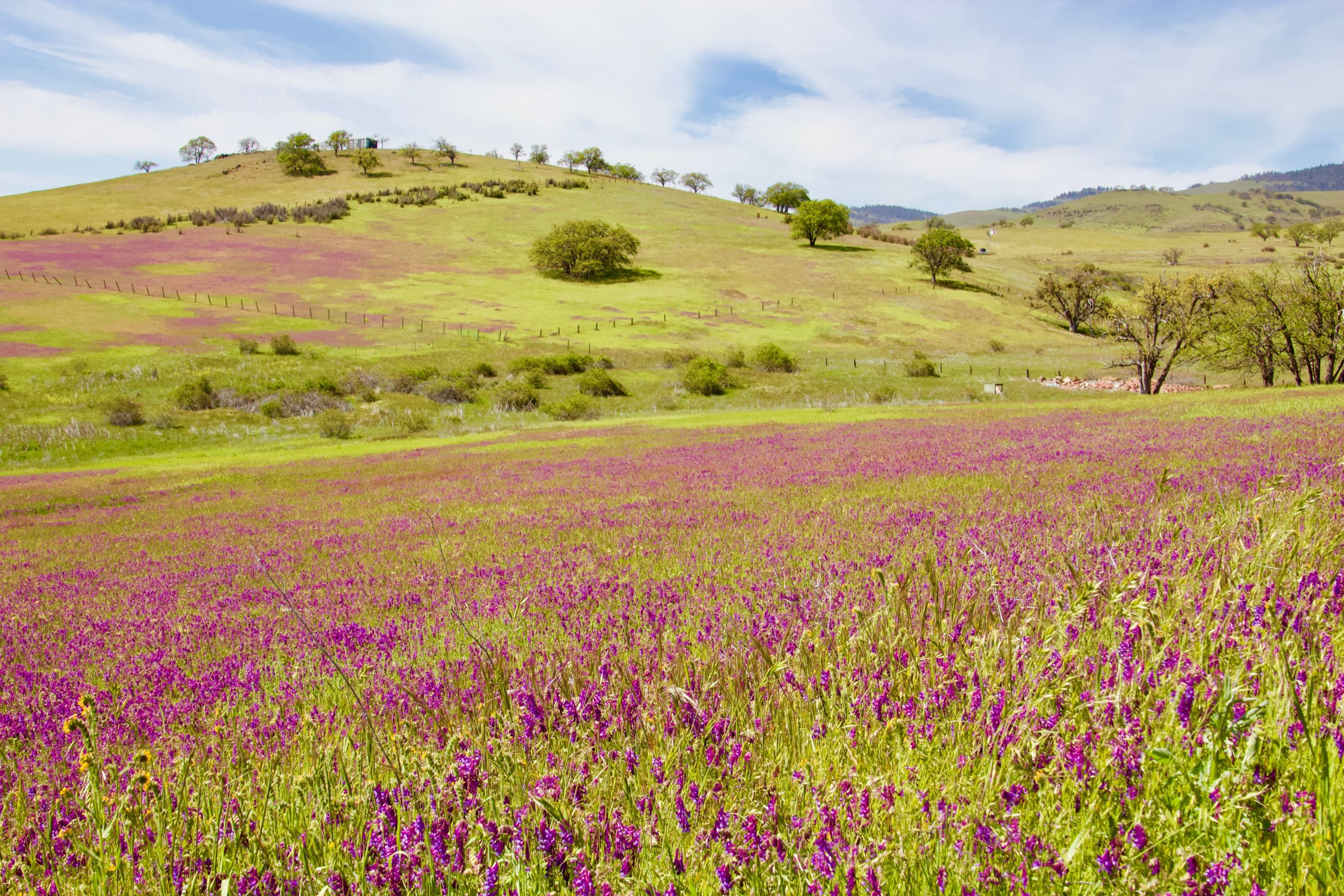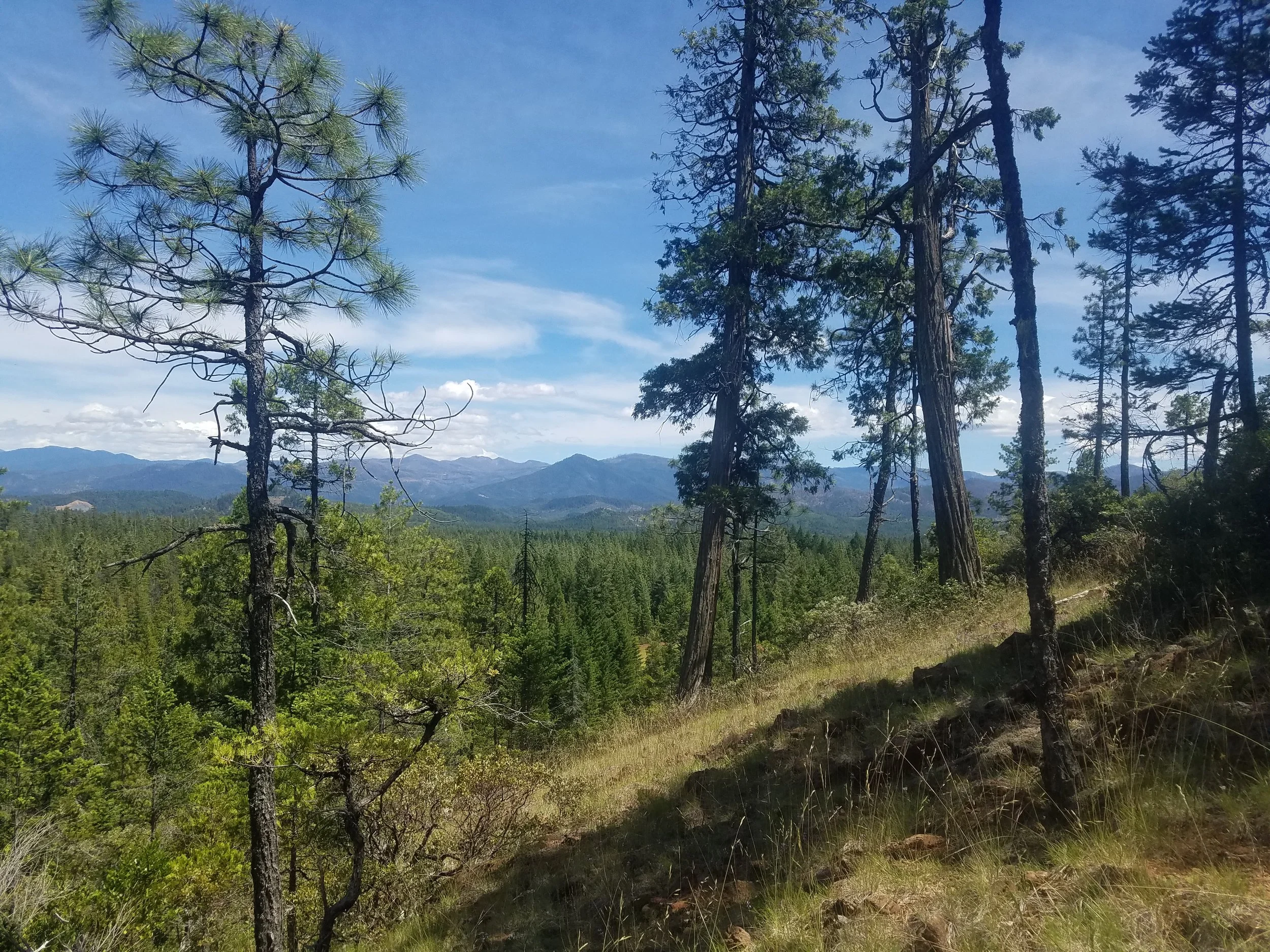Walking through the buckbrush chaparral at Rogue River Preserve, you will encounter a unique group of birds that almost exclusively forage and raise families in the shrubs. Chaparral is a fire-adapted shrubland community found in Mediterranean climates. If you ride your horse through the pokey plants, wearing chaps is recommended—hence the name.
Deer and elk also forage on the buckbrush, creating unique woody shapes, some reminiscent of bonsai. At the base of the manicured shrubs, you may hear a soft metallic “chink,” the call of a skulking and elusive bird, the California Towhee. Take a breath, practice deep listening, and eventually you may glimpse this subtle beauty. Last winter, researchers from Arizona managed to capture one at the Preserve, took blood samples for a taxonomic study, and released the bird with an identification bracelet (pictured below).
In early April, when the diminutive rare white fairypoppy flower is in bloom under the buckbrush, watch for a flick of feathers, listen for the squeak of a cat toy, and grin if you glimpse a small acrobatic blue-gray sprite, the Blue-gray Gnatcatcher (pictured above). Truly one of the cuter birds of the world, this gnatcatcher is near the edge of its range at the Preserve and breeds in mature buckbrush. The Oregon Watershed Enhancement Board classifies it as a priority bird for conservation.
A perky long tail, all in a twitch, a dramatic white eyebrow, and a boisterous song are signs you have found a Bewick’s Wren (pictured below), a year-round resident. If the bees are mobbing the buckbrush flowers, they also may be mobbed by herds of Yellow-rumped Warblers who dine on the insects visiting the flowers. These busy warblers are not chaparral-specialists but are commonly seen when the air is scented with buckbrush posies.
Remnant valley-floor chaparral continues to disappear, transformed into vineyards and subdivisions. But the chaparral at the Preserve is for the birds as well as for the bees, the deer, the moths, and the butterflies.














